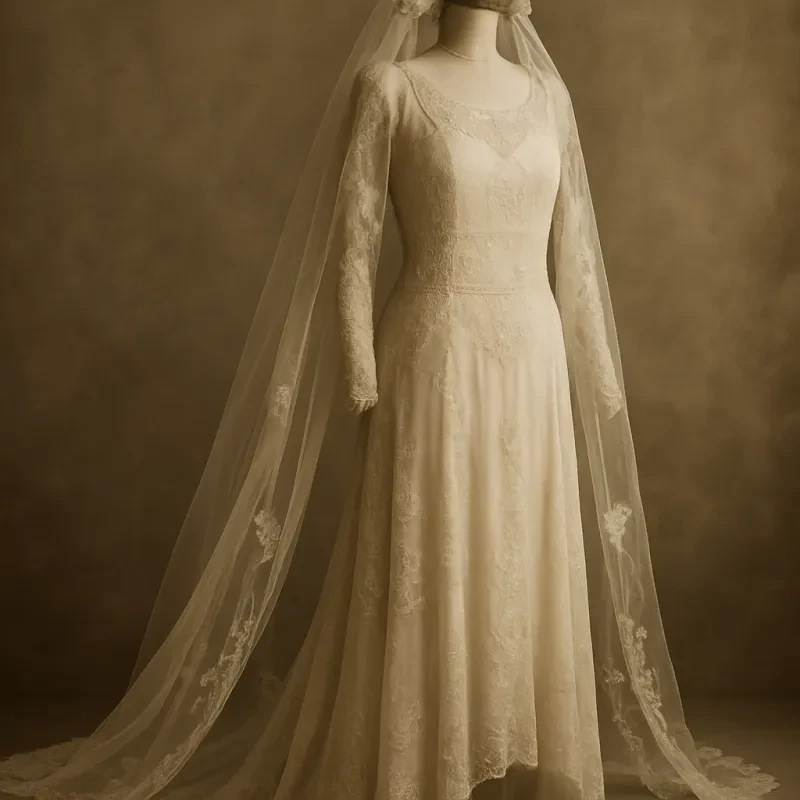The kimono, a traditional Japanese garment, has undergone a fascinating evolution throughout history. From its origins as a simple T-shaped robe worn by the indigenous people of Japan, to its status as a symbol of cultural identity and fashion statement, the kimono has retained its timeless appeal while adapting to the changing times.
Originally, the kimono was a modest and practical garment made from single pieces of fabric. The design was loose, allowing for freedom of movement, and the sleeves were wide. Over time, as Japan opened up to influences from other cultures, the kimono underwent various modifications. During the Heian period (794-1185), it became more tailored and elegant, featuring intricate patterns and luxurious fabrics.
As Japan entered the Meiji era (1868-1912) and embraced modernization, the kimono encountered new challenges. Western-style clothing became popular, and the kimono started to lose its prominence. However, instead of disappearing, the kimono adapted. It began to incorporate Western elements such as collars and buttons, making it more accessible to younger generations and appealing to a broader audience.
Today, the kimono serves not only as traditional formal wear for special occasions like weddings and tea ceremonies but has also found its way into the world of high fashion. Designers around the globe draw inspiration from the kimono's exquisite craftsmanship, vibrant colors, and rich history, creating modern interpretations that appeal to a wider audience. The kimono's journey from being a traditional garment to a trendy and versatile fashion choice is a testament to its enduring appeal and adaptability.
Why the Japanese Kimono is Making a Comeback
The Japanese kimono, a traditional garment with centuries of history and cultural significance, is experiencing a renaissance in recent years. This resurgence is driven by a combination of factors, including a renewed interest in traditional craftsmanship and a growing appreciation for Japanese culture worldwide.
One reason for the kimono's comeback is its timeless and elegant design. The garment's simple yet sophisticated aesthetic has been inspiring fashion designers and influencers around the world. With its clean lines, graceful drapery, and intricate patterns, the kimono has the ability to transform anyone into a walking work of art.
In addition to its visual appeal, the kimono's revival can be attributed to its versatility. Originally worn as a formal attire, the kimono has now evolved into a versatile piece of clothing that can be adapted to any occasion. From formal events to casual outings, modern adaptations of the kimono cater to a wide range of tastes and styles, making it accessible and appealing to a broader audience.
Furthermore, the kimono's resurgence is also connected to a growing awareness and appreciation for traditional Japanese craftsmanship. The garment is meticulously handcrafted, often using techniques passed down through generations. Today, artisans and designers are working to preserve and promote these ancient techniques, ensuring the continued existence and relevance of this cultural icon.
Reinventing the Kimono: Modern Fashion meets Classic Style
The Japanese kimono has a rich history that dates back to ancient times. Originally worn as a traditional garment, the kimono has undergone a remarkable transformation in recent years, evolving from a symbol of tradition to a modern fashion trend. With its timeless style and intricate craftsmanship, the kimono continues to captivate fashion designers and enthusiasts around the world in a true union of classic and contemporary.
One of the key aspects of the kimono's reinvention is the fusion of traditional techniques with modern fabrics and designs. Fashion houses are experimenting with different textiles, patterns, and colors to create unique and innovative versions of the kimono. From bold, vibrant prints to minimalist, monochromatic styles, the modern kimono embraces a wide range of aesthetics while remaining true to its fundamental shape and structure.
Another significant factor in the kimono's resurgence is the versatility it offers in terms of styling. Kimonos can be worn as statement pieces for special occasions or incorporated into everyday attire. They can be paired with jeans and a t-shirt for a casual yet elegant look, or layered over a dress for a more formal appearance. This adaptability has made the kimono a favorite among fashion-forward individuals seeking to infuse their wardrobe with a touch of Japanese elegance.
Unveiling the Beauty of the Japanese Kimono: From Runways to Streets
Unveiling the Beauty of the Japanese Kimono: From Runways to Streets
The Japanese kimono, with its rich history and exquisite craftsmanship, has evolved from a traditional garment to a fashion-forward trend. Rooted in ancient Japanese culture, the kimono represents not only a beautiful piece of clothing but also a symbol of tradition, elegance, and heritage.
In recent years, the kimono has made a significant comeback in the fashion world, with designers incorporating its unique elements into modern designs. Kimonos with vibrant colors, intricate patterns, and luxurious fabrics have made their way onto international runways, gracing the fashion shows of renowned designers.
Beyond the fashion shows, the kimono has also found its place on the streets, as fashion enthusiasts embrace this iconic garment as a stylish and versatile addition to their wardrobes. From casual outings to formal occasions, the kimono effortlessly blends with different styles, creating endless possibilities for self-expression and individuality.
The resurgence of the Japanese kimono as a trendy fashion statement pays homage to its cultural significance and timeless beauty. As contemporary designers and fashion enthusiasts continue to explore its potential, the kimono has transformed from a traditional garment into a symbol of cultural fusion and an icon of fashion-forward elegance.


